 |
The Pedal
division is an interesting part of the organ. While the console may
offer the organist a dozen stop knobs for the Pedal, usually the
division borrows pipes from other divisions, and is made up of
extensions of other ranks of pipes in the organ. On most organs, the
Pedal ranks can only be played on the pedal board. Playing the pedal is
not easy and is what separates the "men from the boys" so to speak
in the organist world.
In the back of left chamber are two of the Pedal division ranks. The
wood pipes are of the 16' Bourdon rank, and the metal pipes seen at the
bottom are of the 16' Principal rank.
|
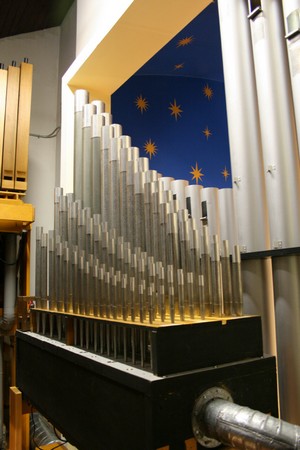 |
Not all
Pedal division ranks have gigantic pipes (though most do). Mounted on
the black platform are the three ranks of pipes. The first two sets are
the II Mixture, and the back set (taller pipes) are the higher pitched
pipes of the 16' Principal rank. |
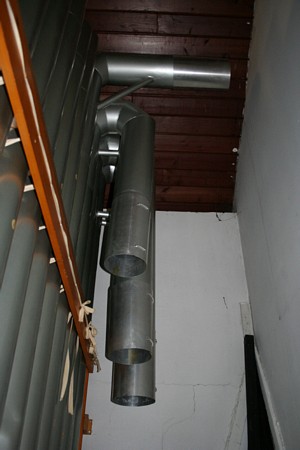 |
Behind the 16' Bourdon rank are the largest pipes of the 16' Principal
rank. Due to height limitations, the longest pipes have been mitered in
order to fit in the space. The tuning slides on the end of these pipes
can be seen. Small springs keep the slides tight on the pipe so they do
not move.
|
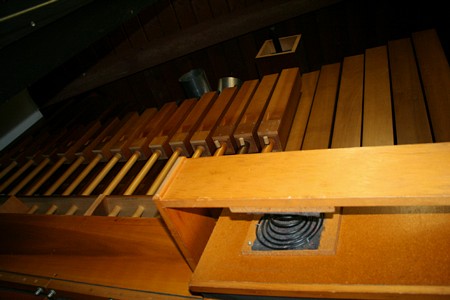 |
Here's another look a the 16' Bourdon pipes. Note the mitered pipes on top peaking over the smaller pipes. |
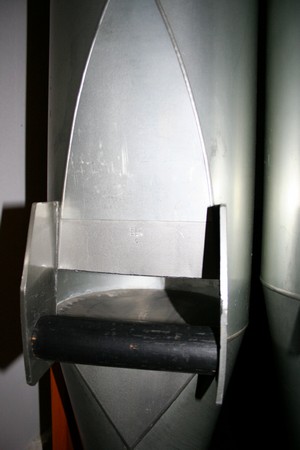 |
Back in
the corner is the largest pipe of the 16' Principal rank (pitch CCC).
The sides on either side of the pipe help direct the sound forward.
Each pipe was refurbished as necessary by Muller during the organ
rebuild. |
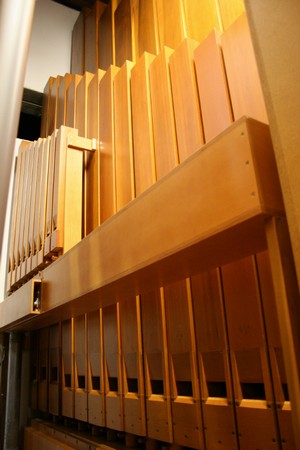 |
In the rear of
the right chamber are probably the most powerful pipes of the Pedal
division, the 16' Open Wood Flute rank. These pipes originally came
from an E.M. Skinner organ (opus 264) which puts their construction
date around 1916! Skinner was known for making larger organs so the
voicing of these pipes, combined with the 5" of wind pressure, is more
typical of a romantically voiced organ. |
 |
On the left is
the largest pipe of the 16' Open Wood Flute (pitch CCC). These big
blocks of wood require a substantial amount of air in order to get them
to reach their full sound potential. Often they have their own offset
wind reservoir to ensure they have enough air.
|
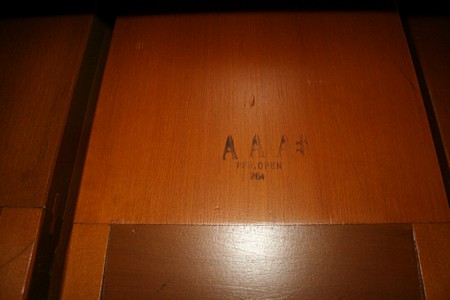 |
Here's a closer
look at the markings on this rank of pipes. As noted above, "264" is
the opus number from which this rank of pipes came from. According
to Scott Hayes of Muller Pipe Organs, this rank is from an E.M. Skinner
organ. A little internet searching reveals that E.M. Skinner opus 264
was installed in First Church of Christ, Scientist in South Bend, IN. |
| Often
Pedal stops are extensions of other ranks in the organ. On this organ,
the 12 notes of the 16' Trombone rank are an extension of the 8' Tromba
rank in the Great division. On the left are the 12 pipes of the rank.
On the right is the boot of the biggest pipe. W.P. 5" translates to
"wind pressure 5", CCC represents the pitch, and the diamond logo on
the right is of the A.R. Schopps company which supplies pipes and other
organ parts to organ builders. |
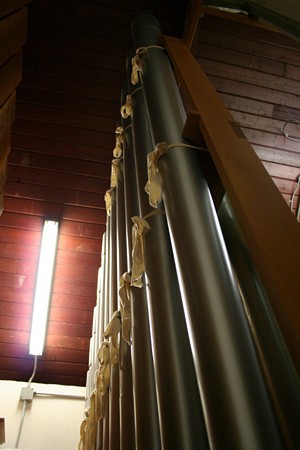
|
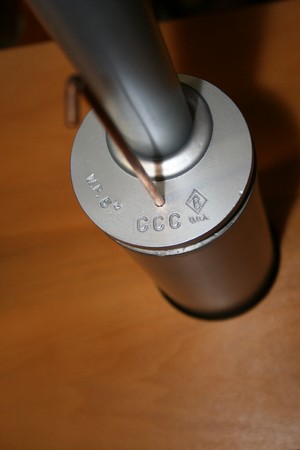
|
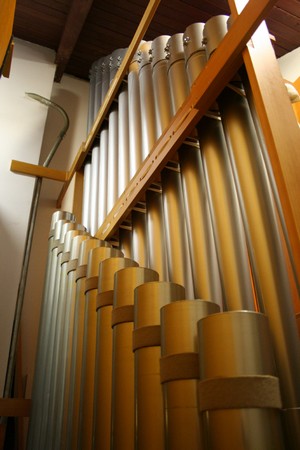 |
On the other side of the 16' Trombone pipes are the bottom 12 pipes of the 16' Chimney Flute rank from the Swell division. |










